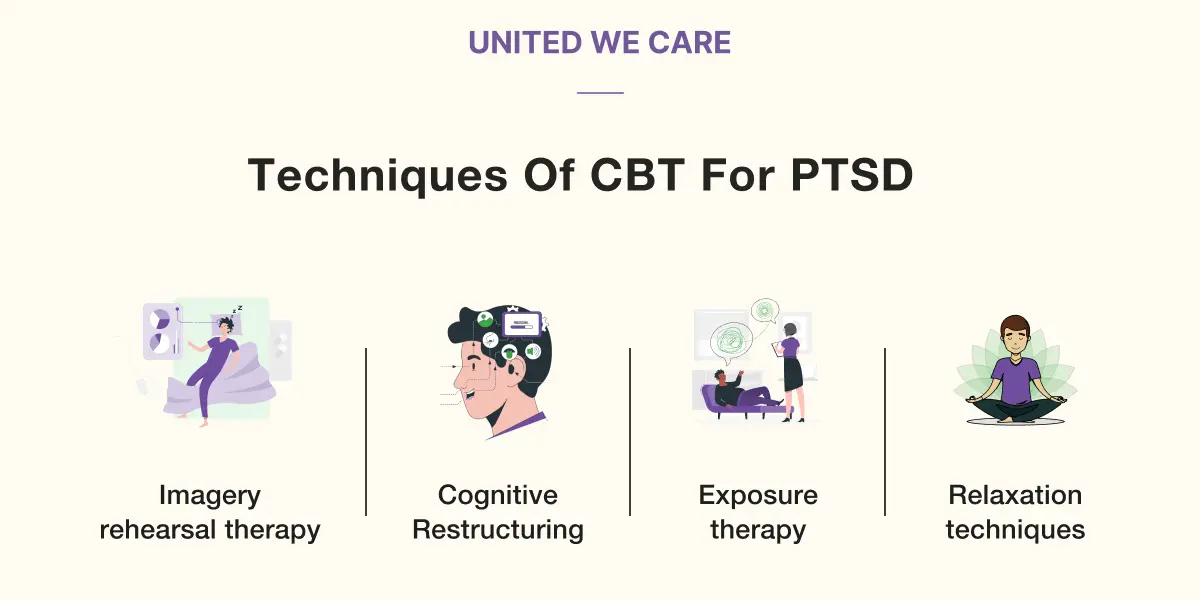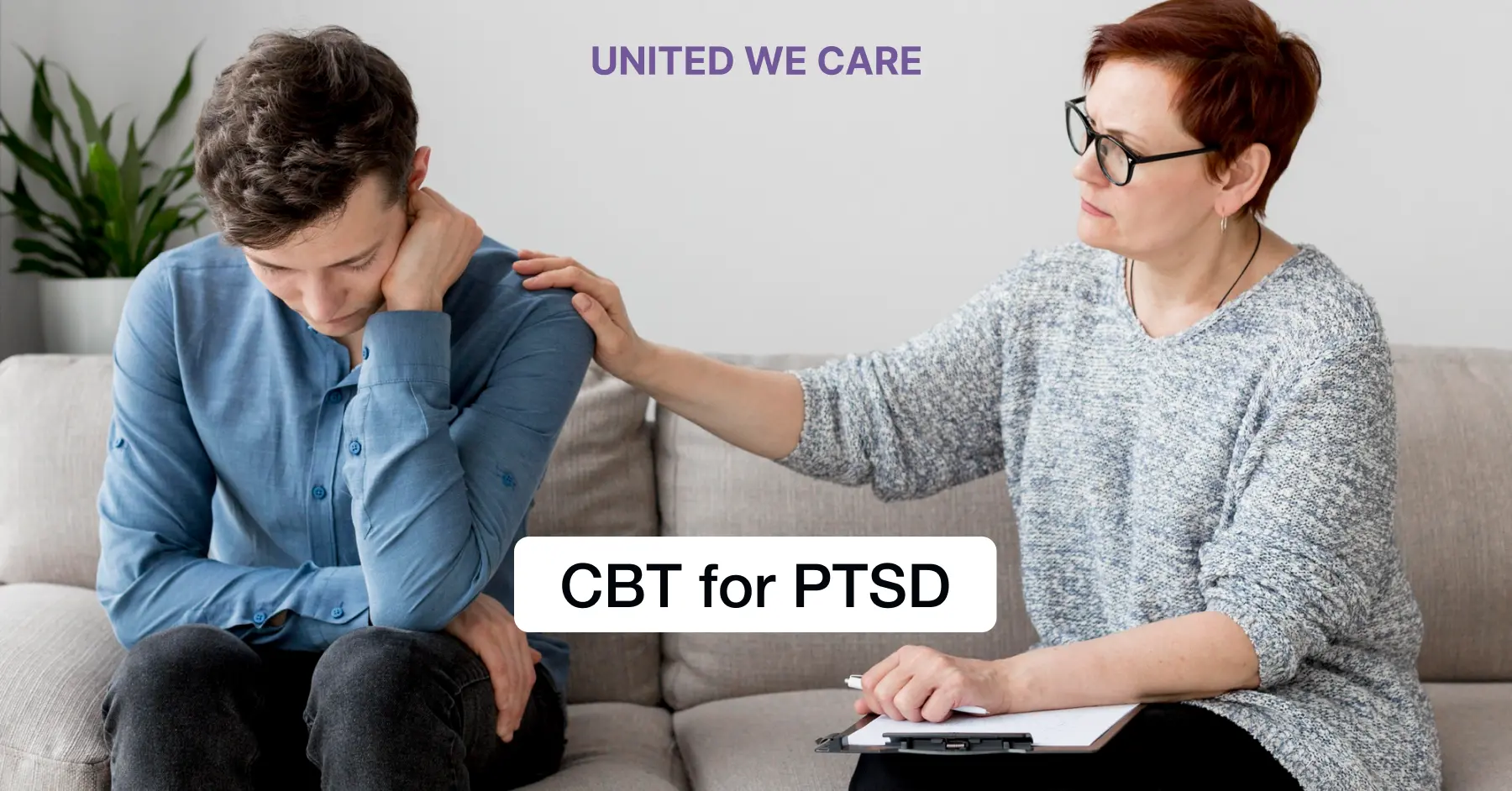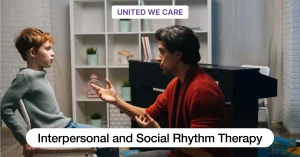Introduction
Most of us have experienced at least one terrible event in our lives. Post-traumatic stress disorder (PTSD) may arise from exposure to traumatic experiences such as natural disasters, major accidents, abuse or assault, war, or even the pandemic that caused widespread illness and death. These events can change our thoughts and behaviors. If you have post-traumatic stress disorder (PTSD), you can be emotionally dysregulated, experience flashbacks to the terrible incident, and engage in avoidance behaviors. This is because, even in safe environments, your perception of risk may be heightened, and you may experience worry or fear long after the traumatic occurrence. A combination of counseling and medication can achieve effective PTSD management. For PTSD, cognitive behavioral therapy (CBT) is thought to be one of the most effective treatment options today.
In this blog, we’ll discuss PTSD and the CBT techniques used to treat this disorder, their effectiveness, and common CBT exercises for self-help.
CBT for PTSD
Let’s look at an evidence-based treatment that examines the relationship between your thoughts, feelings, and actions- cognitive behavioral therapy. The basic idea behind CBT is that your ideas and beliefs cause you to feel particular emotions, which in turn cause you to act and react in ways that further solidify your views. Therefore, whatever limiting thinking you have about yourself, someone else, or a circumstance will only get more intense through your emotions, which will result in undesirable actions and consequences.[1] With cognitive behavioral therapy (CBT), you can learn to recognize and question the thought patterns that aren’t working for you and swap them out for more practical and uplifting ones that will support you in reaching your objectives.
Symptoms of PTSD
If you have post-traumatic stress disorder, you likely experience the following symptoms: [2]
- Recurrent distressing thoughts and flashbacks: You may be constantly reliving what happened, making you feel like the trauma is happening in the present.
- Internal or external avoidance: You’re not able to remember the exact details of what happened, and you feel like you have to keep busy to avoid any memories of the trauma constantly. You may also be avoiding places, activities, or situations that remind you of the traumatic event.
- Negative thoughts: You’ve started thinking negatively about yourself, others, and the world. You feel hopeless about the future and have lost interest in activities you enjoyed before.
- Hypervigilance or exaggerated startle: You’re always on the lookout for danger; hence, you may be jumpy and easily frightened. You may also experience issues with concentration and sleep.
How does CBT work for PTSD?
4 Useful Techniques Of CBT for PTSD
Cognitive behavioral therapy can be very effective in helping you address these symptoms through various techniques, such as:

- Imagery rehearsal therapy: If your intrusive thoughts manifest as nightmares, this technique can help you change the ending of these recurrent nightmares, making them less distressing for you.[3]
- Cognitive restructuring: Challenging distressing thoughts by looking for evidence to support them and, in the absence of evidence, replacing these thoughts with balanced and positive narratives can help you reshape negative beliefs about yourself, others, and the world.
- Exposure therapy: Confronting your trauma and learning to cope with it by gradually exposing yourself to the reminders of your trauma in a clinically controlled setting can help reduce your fears associated with it.
- Relaxation and stress reduction: Practicing deep breathing, guided imagery, or progressive muscle relaxation can help lower your stress and anxiety, and hence the hyperarousal.
How Effective is CBT for PTSD?
Most recent studies have evaluated and deemed CBT to be effective in the treatment of PTSD:
A 2021 study on the efficacy of cognitive behavioral therapy for patients with post-traumatic stress disorder found that CBT is a safe and effective intervention for patients of all age groups experiencing trauma from a diverse range of sources such as terrorism, war, critical disease, natural disasters, road accidents, migration, abuse, assault, etc. [4]
Another 2021 study evaluated the longevity of benefits of CBT post-treatment in 100 participants with PTSD. Researchers found that the benefits of CBT lasted for at least two years post-treatment, hence making it an effective treatment for PTSD. [5]
A 2023 Polish study reviewed the efficacy of selected psychotherapies for PTSD from the pandemic and the war in Ukraine and found CBT with exposure therapy to have the highest efficiency in the treatment of PTSD, along with eye movement desensitization and reprocessing (EMDR).[6]
How to Use CBT for PTSD
- Suppose your therapist has suggested cognitive behavioral therapy as part of your treatment for PTSD. In that case, you may use some CBT-based self-help strategies in conjunction with it to manage your symptoms better.
- Make it a practice to meditate or engage with your breath during your breaks or at any point in your day. This can help you feel grounded in the present and be mindful of how you’re feeling.
- Journaling and noting down your thoughts during distressing situations can help you identify your triggers and patterns. To cultivate a more positive mindset, you can also note down things you’re grateful for each day.[7]
- If you find yourself in loops of negative thoughts, try challenging them by using a thought record worksheet. You can do this by looking for any evidence to support these thought patterns, and when you don’t find any, then replace these thoughts with more balanced and positive ones. Practicing positive affirmations can also help.
- Overall, taking good care of yourself by eating healthy food, exercising regularly, and getting good sleep is important in improving and maintaining your mental health.
Conclusion
Experiences such as war, pandemics, abuse and assault, and natural disasters can be traumatic, and how we’re affected by them can alter the way we think and behave. This is known as post-traumatic stress disorder. CBT is an evidence-based psychotherapy that is effective in the treatment of PTSD symptoms such as intrusive thoughts, avoidance behaviors, negative perceptions, and hypervigilance.
It is crucial to consult a mental health professional who will examine your history and symptoms and suggest the best course of treatment for you. In conjunction with your treatment, you can use CBT-based self-help strategies to manage your symptoms better. Book a session with one of our mental health experts, who can help create the best treatment plan for you. You can even explore our extensive list of self-paced courses for self-management. At United We Care, we offer the most appropriate, clinically backed solutions for all your needs for well-being.
References:
[1] S. C. Hayes and S. G. Hofmann, Process-Based CBT: The Science and Core Clinical Competencies of Cognitive Behavioural Therapy. [Online]. Available: https://books.google.co.in/books?id=J0tHDgAAQBAJ. Accessed: Nov. 30, 2023.
[2] Jessica L. Walton, Lisa-Ann J. Cuccurullo, Amanda M. Raines, Desirae N. Vidaurri, Nicholas P. Allan, Kelly P. Maieritsch, C. Laurel Franklin, “Sometimes Less is More: Establishing the Core Symptoms of PTSD,” in Journal of Traumatic Stress, vol. 30, no. 3, pp. 254-258, 2017. [Online]. Available: https://onlinelibrary.wiley.com/doi/abs/10.1002/jts.22185. Accessed: Nov. 30, 2023.
[3] Barry Krakow, MD, Antonio Zadra, PhD, “Imagery Rehearsal Therapy: Principles and Practice,” in Sleep Medicine Clinics, vol. 5, no. 2, pp. 289-298, 2010. [Online]. Available: https://www.sleep.theclinics.com/article/S1556-407X(10)00005-6/fulltext. Accessed: Nov. 30, 2023.
[4] S. Motevalli et al., “The Efficacy of Cognitive-Behavioral Therapy for Patients with Posttraumatic Stress Disorder (PTSD),” in Clinical Schizophrenia & Related Psychoses. [Online]. Available: https://www.researchgate.net/publication/360354031. Accessed: Nov. 30, 2023.
[5] Richard A. Bryant, Lucy Kenny, Natasha Rawson, Catherine Cahill, Amy Joscelyne, Benjamin Garber, Julia Tockar, Jenny Tran, Katie Dawson, “Two-year follow-up of trauma-focused cognitive behavior therapy for posttraumatic stress disorder in emergency service personnel: A randomized clinical trial,” in Clinical Trials in Depression and Anxiety, vol. 38, no. 11, pp. 1131-1137, 2021. [Online]. Available: https://onlinelibrary.wiley.com/doi/abs/10.1002/da.23214. Accessed: Nov. 30, 2023.
[6] J. Kowalski et al., “A review of selected psychotherapies for PTSD: their efficacy and treatment guidelines in adults.” [Online]. Available: https://www.researchgate.net/publication/371069557. Accessed: Nov. 30, 2023.
[7] P. J. Shannon, J. Simmelink-McCleary, H. Im, E. Becher, and R. E. Crook-Lyon, “Developing Self-Care Practices in a Trauma Treatment Course,” Journal of Social Work Education, vol. 50, no. 3, pp. 440-453, 2014. [Online]. Available: https://doi.org/10.1080/10437797.2014.917932. Accessed: Nov. 30, 2023.





